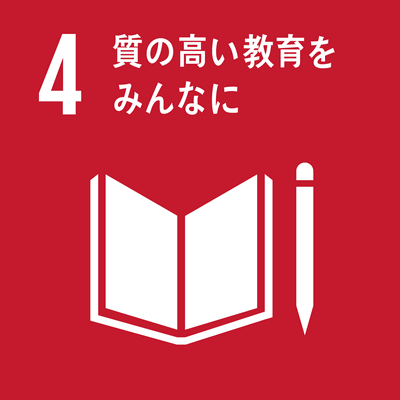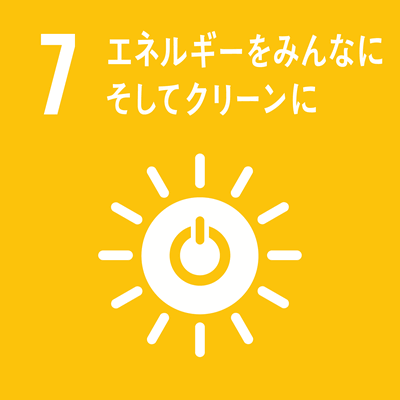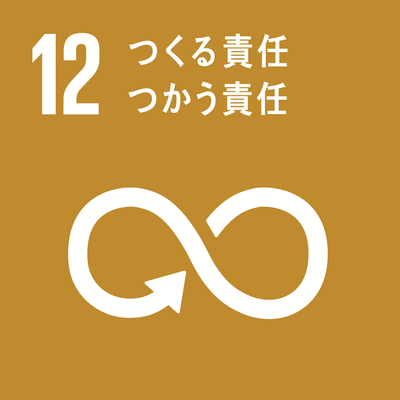シラバス表示
シラバスの詳細な内容を表示します。
→ 閉じる(シラバスの一覧にもどる)
科目の基本情報
| 開講年度 | 2023 年度 | |
|---|---|---|
| 開講区分 |
工学部自由科目 学部修士一貫コースのクロス科目です。 |
|
| 受講対象学生 |
学部(学士課程) : 4年次 |
|
| 選択・必修 | 選択 |
|
| 授業科目名 | 電子デバイスプロセス設計特論 | |
| でんしでばいすぷろせすせっけいとくろん | ||
| Electronic Device Process Design | ||
| 単位数 | 2 単位 | |
| ナンバリングコード | EN-EMAT-5
|
|
| 開放科目 | 非開放科目 | |
| 開講学期 |
前期 |
|
| 開講時間 |
火曜日 1, 2時限 |
|
| 授業形態 |
対面授業 * 状況により変更される可能性があるので定期的に確認して下さい
「オンライン授業」・・・オンライン会議ツール等を利用して実施する同時双方向型の授業 |
|
| 開講場所 | 未定(別途連絡) | |
| 担当教員 | 佐藤 英樹(工学研究科電気電子工学専攻) | |
| SATO, Hideki | ||
| 実務経験のある教員 | 【教員名】 佐藤 英樹 【実務経験】半導体製造装置・真空機器メーカーにおいて開発業務に従事 【講義内容との関連性】実務経験より得た知識,技術等を活かして,実務における本講義内容の知識の活用法に関する指導を行う。 |
|
| SDGsの目標 |
|
|
| 連絡事項 | * 状況により変更される可能性があるので定期的に確認して下さい |
|
学修の目的と方法
| 授業の概要 | 半導体集積回路や液晶ディスプレイなどの電子デバイスは、ナノスケールの膜厚を持つ極めて薄い膜を形成する技術、すなわち薄膜作製技術により成り立っているといっても過言ではない。そのため最先端電子デバイスにおいては、必要とされる特性を持つ薄膜材料を作製し、さらに必要な形状に加工するためのプロセス設計技術が不可欠である。 本講義では、薄膜作製技術の基礎となる表面物性工学、真空工学、薄膜工学について講義し,各種成膜技術(蒸着、スパッタリング、CVDなど)、ドライエッチング技術、薄膜評価技術について理解してもらうことを目指す。さらに,これら技術と先端ナノエレクトロニクスとの関連について理解することを目指す。 (Course description/outline) Fabrication processes for electronic devices, such as semiconductor devices and liquid crystal displays, largely depend on various thin film deposition techniques that enables formation of high-quality thin films with nanosized thicknesses. These processes also require techniques to etch the thin films with required patterns and techniques to evaluate thin films. The first part of this course will deal with the kinetic theory of gases, the surface and interface engineering and the vacuum engineering, which are fundamentals to understand the latest fabrication processes for electronic devices. Then this course will focus on the science of various thin film deposition techniques such as thermal evaporation, sputtering, and chemical vapor deposition in detail. Further, dry-etching technology and various thin film evaluation methods are also introduced in this course. |
|---|---|
| 学修の目的 | ・電子デバイスプロセスの概要について理解する。 ・真空技術、表面物性工学、薄膜工学について理解する。 ・上記の知識を、ナノエレクトロニクス研究や先端電子材料研究などで応用できるようになる。 (Learning objectives) The goal of this course is to understand, - overview of electronic device fabrication process, - vacuum engineering, surface and interface engineering, and thin film engineering, - how to apply these knowledge to studies on nanoelectronics and electronic materials. |
| 学修の到達目標 | 電子デバイスプロセスにおいて重要な位置を占める薄膜形成技術に関して,下記の各事項について理解する。 (1)電子デバイスプロセスの概要 (2)真空技術 (3)表面物性工学 (4)薄膜形成技術 (5)薄膜評価技術 (6)各種薄膜材料(金属、半導体、絶縁体)とそれらの応用 (7)ドライエッチング技術 (8)先端薄膜材料 (内容については、変更になる場合もあります) (Achievements) Through this lecture, the students will acquire knowledge regarding the following things. (1) An overview of fabrication processes of electronic devices (2) Vacuum engineering (3) Surface and interface engineering (4) Thin film deposition engineering (5) Evaluation methods of thin films (6) Application of thin films (7) Dry etching technology (8) State-of-the-art thin film materials The students should be able to understand these through the seminar and should have reading comprehension of technical material on the topics shown above. (The contents may be subject to change.) |
| ディプロマ・ポリシー |
|
| 成績評価方法と基準 | 受講態度および提出レポートにより評価を行う。なお、5回以上欠席した場合は原則として不合格とする。 (Grading policies and criteria) The grade will be decided based on attitude in classes, reports and attendance. Absence from class more than or equal five times without due reason results in a fail in grade. |
| 授業の方法 | 講義 |
| 授業の特徴 | |
| 授業改善の工夫 | 授業時に随時、意見を聞き、授業内容に反映させる。 (Ideas for improving classes) Improvement of course has been made as needed based on feedback from students. |
| 教科書 | 教科書については授業開始時に連絡する。 (Textbook) To be announced in the class. |
| 参考書 | 麻蒔立男「薄膜作成の基礎」日刊工業新聞社、 金原 粲,藤原英夫,応用物理学選書3「薄膜」裳華房, C. Y. Chang and S. M. SZE, "ULSI TECHNOLOGY" McGraw-Hill, 1996, など |
| オフィスアワー | 毎週月曜日 12:00~13:00 場所:電気電子棟1階 1112室 なお、可能であれば随時対応するので、電子メール(sato@elec.mie-u.ac.jp)で確認のこと。 (Office hour) At anytime as requested. Office: Electrical&Electronic Eng. Bldg., Room 1112 E-mail: sato@elec.mie-u.ac.jp |
| 受講要件 | 特になし (Prerequisites) N/A |
| 予め履修が望ましい科目 | 熱力学、電磁気学,半導体工学、量子力学,統計力学,材料科学 (Courses encouraged to take in advance) Thermodynamics, Electromagnetism, Quantum mechanics, Statistical mechanics, Physics and technology of semiconductor, Material science |
| 発展科目 | |
| その他 |
適宜,レポートを課します。 Submissions of some assignments will be required during this course. |
授業計画
| MoodleのコースURL |
|---|
| キーワード | 電子デバイスプロセス、薄膜、真空、表面,気体分子運動論 |
|---|---|
| Key Word(s) | Fabrication processes for electronic devices, thin film, vacuum, surface, kinetic theory of gases |
| 学修内容 | 第1回 薄膜工学概論 第2回 真空工学(1) 気体の分子運動論① 第3回 真空工学(2) 気体の分子運動論② 第4回 真空工学(3) 輸送現象 第5回 真空工学(4) 真空ポンプ,真空計測 第6回 真空工学(5) 真空システム設計 第7回 表面物性工学(1) 表面の性質 第8回 表面物性工学(2) 表面構造の幾何学 第9回 表面物性工学(3) 表面の熱力学 第10回 表面物性工学(4) 気体分子と表面の相互作用① 第11回 表面物性工学(5) 気体分子と表面の相互作用② 第12回 薄膜工学(1) 薄膜形成現象 第13回 薄膜工学(2) 薄膜形成法① 物理的気相成長法 第14回 薄膜工学(3) 薄膜形成法② 化学的気相成長法 第15回 薄膜工学(4) 薄膜評価法 (以上については,変更になる場合があります) (Course contents) 1. Overview of thin film engineering 2. Vacuum engineering (1): Kinetic theory of gases (1) 3. Vacuum engineering (2): Kinetic theory of gases (2) 4. Vacuum engineering (3): Transport phenomena 5. Vacuum engineering (4): Vacuum pumps and vacuum gauges 6. Vacuum engineering (5): Design of vacuum system 7. Surface science and engineering (1): Properties of surface 8. Surface science and engineering (2): Geometry of surface structure 9. Surface science and engineering (3): Thermodynamics of surface 10. Surface science and engineering (4): Interaction between gas molecules and surface I 11. Surface science and engineering (5): Interaction between gas molecules and surface II 12. Thin film engineering (1): Formation phenomena of thin films 13. Thin film engineering (2): Methods for thin film formation (1) -Physical vapor deposition- 14. Thin film engineering (3): Methods for thin film formation (2) -Chemical vapor deposition- 15. Thin film engineering (4): Evaluation methods for thin films (The contents may be subject to change.) |
| 事前・事後学修の内容 | 授業内容について,かならず復習して下さい。また,自分の修士論文研究において本講義の内容がどのように役に立つか,という観点に立ち本講義を聴講して下さい。 Review after the lectures are indispensable to understand each contents. In this class, it is recommended to consider how the contents in this course are related and are useful to your research. |
| 事前学修の時間:120分/回 事後学修の時間:120分/回 |



